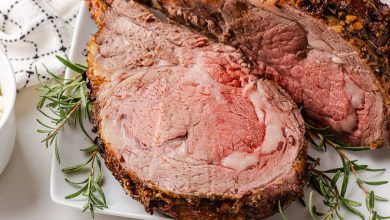Minced Ham: Nutritional Information
Minced ham is a flavorful and versatile ingredient commonly used in a variety of recipes, from savory pies and casseroles to sandwiches and spreads. It’s an excellent source of protein and offers a range of essential nutrients, including vitamins and minerals that contribute to a balanced diet.
Nutritional Breakdown:
| Nutrient | Amount |
|---|---|
| Energy (Calories) | 263 kcal |
| Protein | 16.28 g |
| Total Fat | 20.68 g |
| Saturated Fats | 7.18 g |
| Carbohydrates | 1.84 g |
| Fiber | 0.0 g |
| Sugar | 0.0 g |
| Calcium | 10 mg |
| Iron | 0.79 mg |
| Magnesium | 16 mg |
| Phosphorus | 157 mg |
| Potassium | 311 mg |
| Sodium | 1245 mg |
| Zinc | 1.9 mg |
| Copper | 0.08 mcg |
| Manganese | 0.031 mg |
| Selenium | 20 mcg |
| Vitamin C | 0.0 mg |
| Thiamin (B1) | 0.712 mg |
| Riboflavin (B2) | 0.19 mg |
| Niacin (B3) | 4.162 mg |
| Vitamin B6 | 0.26 mg |
| Folate | 1.0 mcg |
| Vitamin B12 | 0.95 mcg |
| Vitamin A | 0.0 mcg |
| Vitamin E | 0.27 mg |
| Vitamin D2 | 0.7 mcg |
Allergen Information:
Minced ham typically contains pork, which is considered a common allergen for individuals sensitive to certain animal proteins. It may also be processed with ingredients such as preservatives and sodium. Always check the packaging for any additional allergen warnings if you’re purchasing pre-packaged minced ham.
Dietary Preferences:
Minced ham is suitable for individuals following a low-carb or high-protein diet. However, it may not be suitable for those following vegetarian or vegan diets, as it is derived from animal sources. It can be included in gluten-free diets, but be cautious of additives or seasonings that might contain gluten.
Culinary Uses:
Minced ham is a versatile ingredient that can be incorporated into various dishes. It is often used in:
- Sandwiches and Wraps: A quick and easy way to enjoy a protein-packed meal.
- Casseroles and Pies: Adds depth of flavor to savory bakes.
- Salads: Minced ham can be mixed with vegetables and dressing for a hearty salad.
- Spreads: Combine with cheese or herbs for a savory spread perfect for crackers or bread.
Advice for Cooking and Storage:
When cooking with minced ham, ensure that it is thoroughly cooked to enhance its flavor and texture. To maintain its freshness, store minced ham in the refrigerator and consume it within the recommended time frame. For longer storage, minced ham can be frozen for up to three months.
Conclusion:
Minced ham is a nutrient-rich, protein-packed ingredient that adds great flavor to many dishes. Its high fat content means it is quite filling, making it an excellent choice for those who enjoy rich, savory foods. Whether used in breakfast dishes, sandwiches, or dinner recipes, minced ham is a practical and flavorful option for a variety of meal preparations. Always consider its high sodium content, particularly if you’re watching your salt intake, and enjoy it in moderation as part of a balanced diet.










